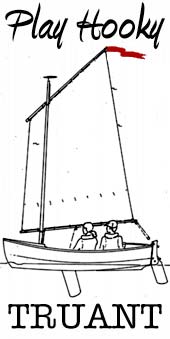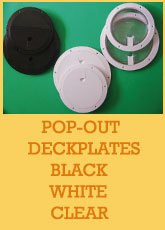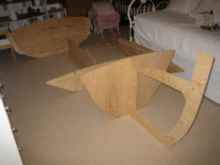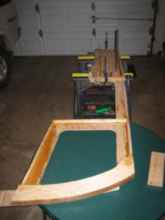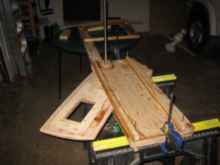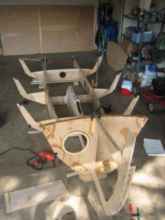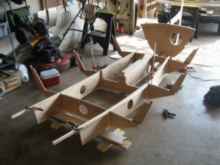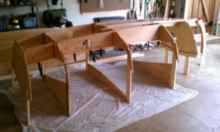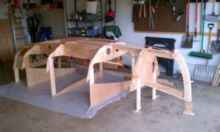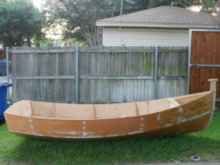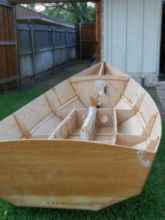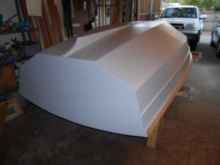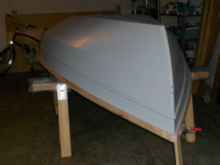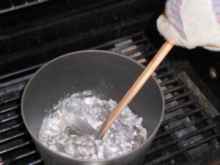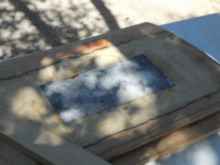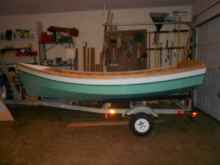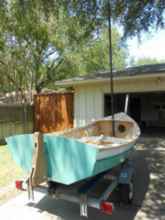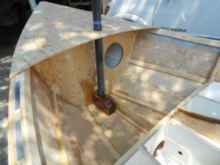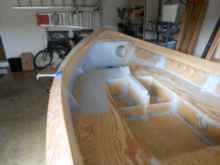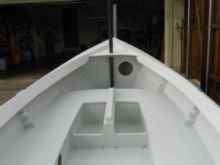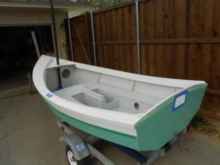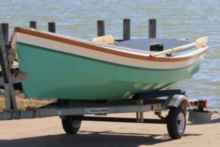Following a work-related move away from the Eastern Seaboard, and the regrettable but necessary sale of my beloved HA – 18 gaff-rigged Catboat, I found myself boatless in the heart of a vast North Texas Metroplex. I like small, open boats with traditional sail rigs, and sailing for me has to be simple, fun, and inexpensive. My first inclination was to buy a used, trailerable daysailor on Craigslist, but the local listings had nothing but modern sloop-rigged boats.
Around this time I happened to stumble upon an article in WoodenBoat Magazine about the 2010 Texas 200. Seeing the various home-built boats suited-up in their lug, gaff, and sprit-rigged sails set the hook in my mind, so I dove into the internet in search of plans. After two months and literally hundreds of designs, I finally decided on John Welsford’s Truant, an 11.5’ sailing dingy outfitted with a balance lug rig.
Truant has a generous beam at 5’4”, which renders an enormous cockpit for a boat of this size. Though most of my sailing is solo, I wanted a boat that could comfortably carry 2 adults, a tween, and a couple of wiener dogs. Since camp cruising is not something I do very often, a daysailor with some storage was all I really needed. I wanted seats, a simple rig, and a straight-forward construction plan using plywood, SS fasteners, epoxy, and paint. I realized that this first boat build would be in large part a learning experience. In the end, the boat had to be sound, comfortable, fun, and not too precious to enjoy. Truant fit the bill.
I ordered plans through Duckworksbbs.com, and started translating measurements onto plywood January 1, 2011. The power tools used in the build were a circular saw, jig saw, drill (including a disk sanding attachment), belt sander, and a small detail sander. The only tools that I bought beyond what fills an ordinary tool box were (plenty of) clamps, and a metric tape measure. The plans are straight-forward, and seeing pictures of how the boat goes together before I started helped ease my concerns about taking on a project of this scope. Without a doubt, the most useful tool throughout the build was the Welsford boat builders group on Yahoo. The wealth and depth of experience that flowed freely from the group, including John Welsford himself, was truly invaluable. I also searched YouTube for videos on boat building. Very helpful.
|
Centercase, Spine, and Centerboard. |
|
Slotting Frames, Spine, and Seat tops. |
|
Trial fit showing egg-crate slotted construction. |
|
Temporary frames support an upside-down build. |
|
Frames together just before stringer installation. |
|
Hull panels on, boat upright for the first time. |
|
View of rough interior before seats. |
Not knowing the limitations of materials, I defaulted to the best I could find. Marine-grade plywood was used throughout, and clear pine was used for the stringers. I found fairly inexpensive planks of Andiroba Mahogany at a local woodcraft shop, and used it wherever hard wood was called for. The rudder stock, tiller, skeg, and mast step were all built-up from mahogany laminations. The wood rub-rails are salvaged mahogany from an old motorcycle crate that came from Asia years ago. A friend had stored these rough planks in his garage for decades, and he generously offered them up for my project. We planned them down, and I ripped and scarfed them to the proper dimensions. I attached them with bronze screws and removable sealant for easy replacement. I think they add a nice touch, and my friend’s wife is no doubt happy to see them gone.
I opted to strengthen the bottom of the boat with fiberglass cloth set in epoxy. This added time and expense, but I feel better having done it. The epoxy, plans, hardware, and sail were purchased from Duckworksbbs.com - The best thing going if you build a boat yourself. I went with aluminum T6 tubing for the mast and spars. In all honesty, building tapered wooden poles does not appeal to me in the slightest. Wood is my preference, however, so I see a potential project for next winter.
The build went largely as I imagined it would, with one exception: It took 100% longer than I anticipated! My goal was to build the boat in 6 months, and be on the water by early summer. In actuality, a full year passed before Sagita slipped her trailer and floated for the first time on December 31, 2011. The project timeline snafu was the result of my inexperience, as well as a few extras that I incorporated into the build. I have since discovered that a one year build is relatively quick for this boat, and in full disclosure I enjoy a lot of free time while on-call for my work. By the way, I made another error in not having some kind of boat, any boat, to use during the build. There were beautiful summer days when a dash to the lake would have provided a welcome break from the sawdust.
I found that building a boat involves a lot of small projects, none of which are insurmountable. It is a marathon, not a sprint. There were snags and frustrations along the way, but in every case I either figured it out or found an answer from a generous fellow builder. It was a rewarding experience in that I devoted a lot of time, mental and physical labor, and a little money toward a project that rendered something beautiful, fun, and useful. I don’t know if I will build another boat for a while. The next phase involves enjoying the fruits of my labor for a few years, and creating happy memories with my family and friends aboard Sagita.
(I plan on submitting a follow-up article that talks about the sailing qualities of the Truant.)
|
Flipped back over for glassing, priming, and painting. |
|
Melting lead dive weights for centerboard ballast. |
|
11 lbs. of lead in centerboard slot. Fiberglass in epoxy covers the whole thing. |
|
Hull painted, on the trailer for finishing interior. |
|
Vew of rudder stock and mast. |
|
Mast stepped for the first time. Foredeck on. |
|
Seat tops on, interior filleting done, primer going on. |
|
Interior painted. Extra leg well around aft portion of centercase visible. |
|
Basic boat nearly complete. |
|
Lauch day. Sail rig incomplete, so just a quick row. |
|


